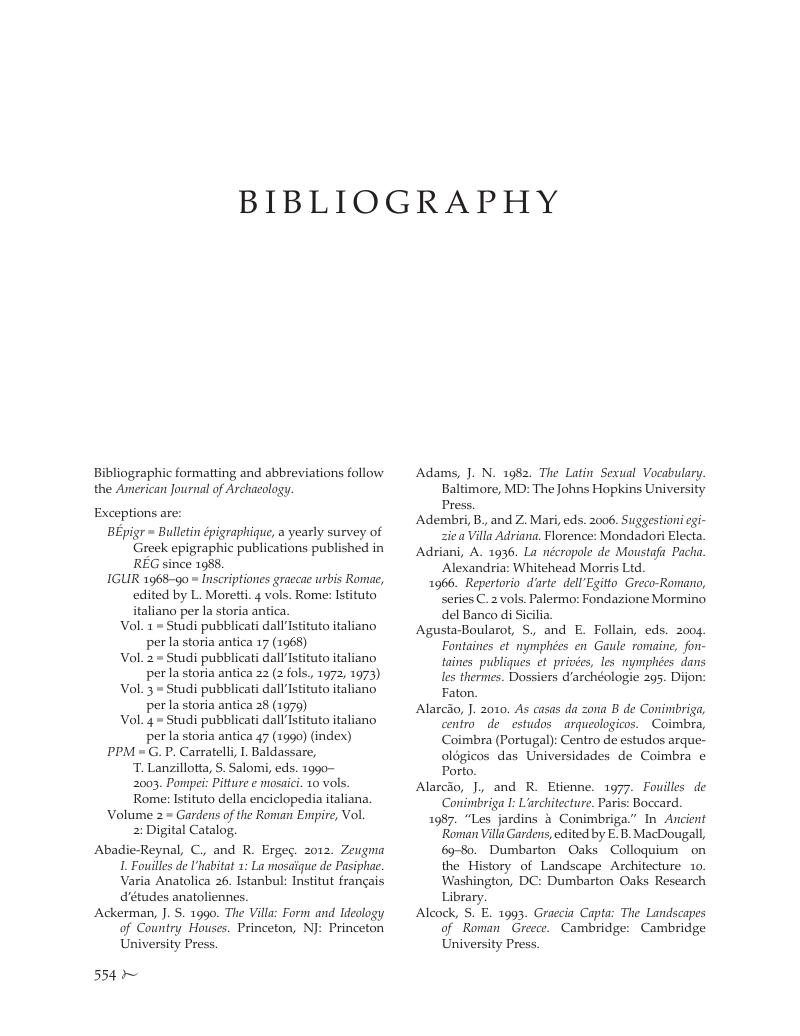Book contents
- Gardens of the Roman Empire
- Gardens of the Roman Empire
- Copyright page
- Dedication
- Contents
- Illustrations
- Tables
- Contributors
- Acknowledgments
- Introduction
- Part I The Main Types of Gardens
- Part II The Experience of Gardens as Revealed by Literature and Art
- Part III Making the Garden
- Notes
- Glossary
- Bibliography
- Index
- References
Bibliography
Published online by Cambridge University Press: 16 December 2017
- Gardens of the Roman Empire
- Gardens of the Roman Empire
- Copyright page
- Dedication
- Contents
- Illustrations
- Tables
- Contributors
- Acknowledgments
- Introduction
- Part I The Main Types of Gardens
- Part II The Experience of Gardens as Revealed by Literature and Art
- Part III Making the Garden
- Notes
- Glossary
- Bibliography
- Index
- References
Summary

- Type
- Chapter
- Information
- Gardens of the Roman Empire , pp. 554 - 604Publisher: Cambridge University PressPrint publication year: 2017

